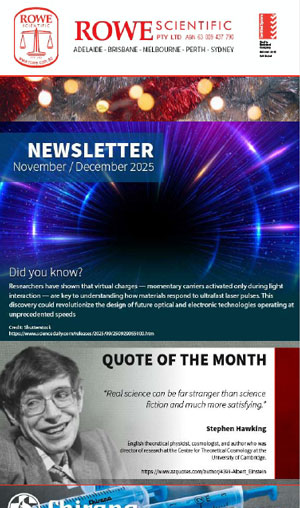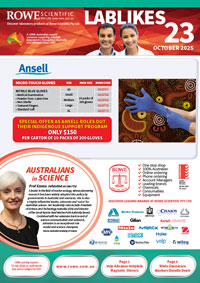![]() 18 Dec 2025
18 Dec 2025

Accurate, modular heating for digestion and sample preparation.
Rowe Scientific now offers the VELP ECODryBlock range – a flexible family of digital dry block systems for COD digestion and general sample heating in environmental and life science laboratories. With intuitive touch control, excellent temperature stability and strong safety features, ECODryBlock systems provide a compact, modern alternative to traditional digesters and block heaters.
Safe, controlled heating for demanding methods
Consistent performance, flexible configurations

ECODryBlock System
Rowe Code: IT0747
Digital modular dry block system for accurate sample heating in life science and environmental laboratories. Supplied with ControlPad, one heating module. Order block for tubes separately.
|
Safety
Performance
Lab features
|
|
ECODryBlock System COD 24
Rowe Code: IT0748
Pre-configured ECODryBlock system for routine COD (Chemical Oxygen Demand) analysis using 24 × 16 mm vials. Supplied with ControlPad, module, transparent cover and dedicated COD block.
ECODryBlock System COD 4
Rowe Code: IT0749
ECODryBlock system configured for 4 × 42 mm high-volume COD tubes, suited to demanding industrial and research applications. Supplied with ControlPad, module and 4-position COD block.
|
Safety
Performance
COD Features
|
|
ECODryBlock Module (no ControlPad)
Rowe Code: IT0750
Additional ECODryBlock heating module supplied without ControlPad, designed to expand capacity or create a second temperature zone on existing systems.
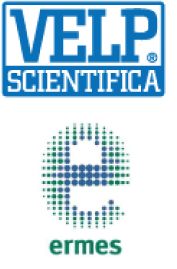 |
![]() 21 Nov 2025
21 Nov 2025
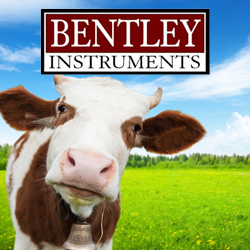
Rowe Scientific Pty Ltd is pleased to welcome Bentley Instruments as a new supplier partner, further strengthening our support for dairy laboratories and processors throughout Australia.
Bentley Instruments manufactures advanced analytical instruments for the measurement of milk and dairy products, providing laboratories with fast, reliable and highly accurate data on everything from raw milk to processed products such as cream, yoghurt, ice cream and frozen yoghurt.
Founded in 1982, Bentley Instruments focuses exclusively on analytical and automation solutions for the dairy sector. Over more than four decades, the company has developed a strong global footprint by concentrating on instruments that deliver:
High precision and reliability in demanding laboratory environments
Robust, computer-controlled systems that streamline workflows
Proven performance in milk composition and hygienic quality testing
Their technology includes pioneering work in applying flow cytometry to routine milk analysis, which has contributed to Bentley Instruments being widely recognised in milk and dairy product laboratories worldwide.
By adding Bentley Instruments to our portfolio, Rowe Scientific can now offer dairy laboratories:
Access to specialised milk and dairy analysers backed by a long-standing global supplier
The convenience of local stock, local advice and local service through Rowe Scientific’s national network
Support in selecting instruments that align with regulatory requirements, quality standards and production goals
Our team will work closely with Bentley Instruments and with our clients to ensure the right configuration of instruments, accessories and support for each facility.
Bentley Instruments’ philosophy aligns closely with Rowe Scientific’s own commitment to the laboratory sector. Their product development is guided by key principles:
Quality: instruments engineered for long-term, dependable operation
Simplicity: intuitive interfaces that reduce training time and operator error
Value: a focus on lifetime value and productivity, not just initial purchase price
Service & support: responsive help when issues arise, to minimise downtime and keep testing programmes on track
These priorities complement our purpose at Rowe Scientific: to keep our clients supplied with the scientific tools they need to do their work.
If you operate in the dairy sector and would like to discuss how Bentley Instruments’ solutions could support your laboratory or plant, contact your local Rowe Scientific representative.
Rowe Scientific looks forward to working with Bentley Instruments to provide innovative, reliable solutions for dairy testing laboratories across Australia.
![]() 30 Apr 2024
30 Apr 2024

SAFETY
PERFORMANCE
High tech features
|
|
|
|
|
The DIGITAL models have a capability of up to 200 Ncm of stirring torque which provides excellent performance for many stirring tasks. All models features a brushless motor, SmartChuck™ technology and full set of safety features.
|
SAFETY
PERFORMANCE
HIGH TECH FEATURES
|
|
Do you require stirring shafts? |
|
|
Floating blades
|
Folding blade
|
Fixed blade
|
Propeller
|
|
|
|
|
|
|
|
Blade Ø (mm)
|
93
|
60
|
50
|
60
|
|
Shaft Ø (mm)
|
7
|
7
|
7
|
7
|
|
Shaft length (mm)
|
400
|
400
|
400
|
400
|
|
Speed range
|
M-H
|
M-H
|
M-H
|
M-H
|
|
Viscocity range
|
VL-L
|
VL-L
|
VL-L
|
VL-L
|
|
|
Two blades open as the speed rises which generates an axial flow in the container, from the top towards the bottom. Particularly recommended for stirring in narrow neck containers, e.g. flasks.
|
The blade automatically falls into line during rotation generates an axial flow in the container, from the top towards the bottom. Particularly recommended for stirring in narrow neck containers.
|
The fixed blade generates an axial flow in the container, from the top towards the bottom. Use at medium-high speed for whirling light solids, for flocculations, mixing thickening agents, and stirring sludge.
|
It generates an axial flow in the container with suction of the substance from the bottom towards the top with localised occurences of shearing forces.
|
|
|
6 hole paddle
|
Turbine
|
Turbo propeller
|
Anchor
|
|
|
|
|
|
|
|
Blade Ø (mm)
|
69
|
49
|
46
|
45
|
|
Shaft Ø (mm)
|
7
|
7
|
7
|
8
|
|
Shaft length (mm)
|
450
|
450
|
450
|
450
|
|
Speed range
|
L-M
|
M-H
|
M-H
|
L-H
|
|
Viscocity range
|
L-M
|
M-H
|
M-H
|
M-H
|
|
|
Generates a tangential flow with reduced turbulence and gently mixes the product.
|
Generates a radial flow with suction of the product from the top towards the bottom, with high turbulence and high shearing forces.
|
Generates an axial flow in the container with suction of the substance from the top towards the bottom with low shearing forces. Limited danger of any contact of the blade with the walls of the product’s container.
|
Generates a tangential flow with high shearing forces on the ends. This limits the possibility of sedimentation on the walls of the container.
|
 |
![]() 11 Mar 2024
11 Mar 2024
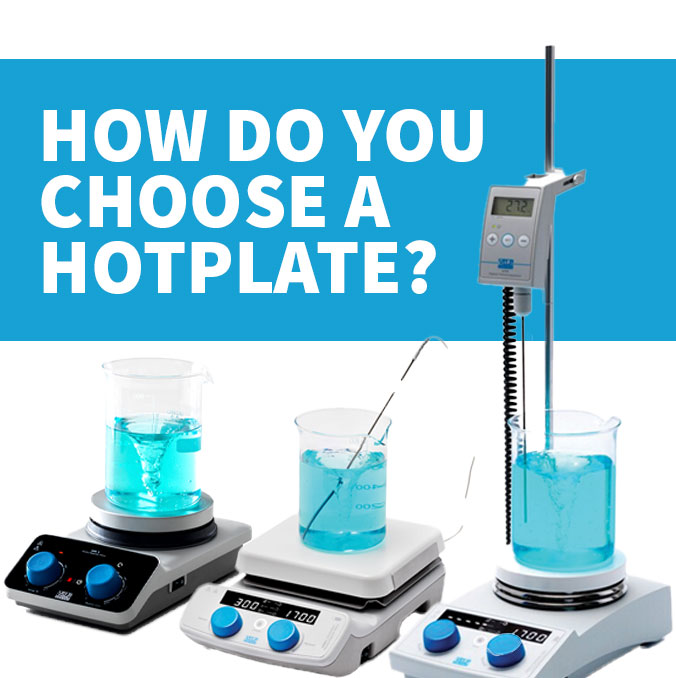
Hot Plate Selection Criteria - How to Choose the right laboratory hotplate.
Selecting the appropriate laboratory hotplate is pivotal for scientists and researchers striving for efficiency and precision. VELP Scientifica is a trusted brand, known for its quality laboratory equipment which provides meticulous control over mixing and heating aqueous solutions, as well as facilitating chemical reaction synthesis.
In this guide, we'll help you navigate the process of selecting the ideal VELP laboratory hotplate for your specific laboratory needs. See below for a quick lookup guide to facilitate your next VELP hotplate purchase.
| 310°C 5 Series | 370°C 6 Series | 550°C 7 Series |
|---|---|---|
| Epoxy Painted Aluminium 135mm Round Plate | Epoxy Painted Aluminium 135mm Round Plate Auto Reverse Function | Ceramic 180mm x 180mm Square Plate |
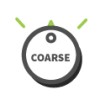 |  |  |
|---|---|---|
| No Controller | Pt100 Probe (to 250-300°C) | VTF Controller (to 250-300°C) |
For remote control via the web, choose a CONNECT model, with ermes communication. Ermes is a secure cloud platform that enables you to access your VELP instrument and data, anytime and anywhere. The purchase of an enabled instrument includes 3 months free trial after which you have the option to purchase a one or three year subscription.
MAX TEMP 310°C
| 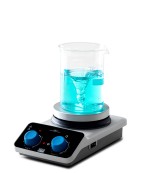 | 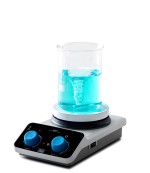 | 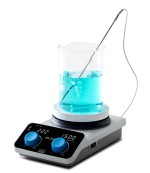 |
|---|---|---|---|
| ARE 5 | AREX 5 | AREX 5 DIGITAL with probe |
|
| SpeedServo™ Counter-Reaction | • | • | • |
| Stirring Volume (L) | Up to 15 | Up to 20 | Up to 20 |
| Heat Controller Type / Temperature Regulation (°C) | Analogue / Room temp up to 310 | Analogue / Room temp up to 310 | Digital / Room temp up to 310 |
| Probe Connection | • (Pt100 included) |
||
| Vertex Connection | • | ||
| Digital Display | • | ||
| Dimensions (W x H x D) (mm) | 160 x 85 x 270 | 160 x 85 x 270 | 160 x 85 x 270 |
| Rowe Code | IM0907 | IM0898 | IM0938 |
MAX TEMP 370°C
|
|
|
|
|---|---|---|---|
| AREX 6 DIGITAL PRO with probe, rod and clamp | AREX 6 DIGITAL PRO with VTF and rod | AREX 6 DIGITAL PRO with probe, rod and clamp |
|
| SpeedServo™ Counter-Reaction | • | • | • |
| Timer | • | • | • |
| Auto Reverse | • | • | • |
| Stirring Volume (L) | Up to 20 | Up to 20 | Up to 20 |
| Heat Controller Type / Temperature Regulation (°C) | Digital / Room temp up to 370 | Digital / Room temp up to 370 | Digital / Room temp up to 370 |
| Probe (Pt100) Connection | • (Pt100 included) | ||
| Vertex Connection | • (VTF included) | • | |
| Digital Display | • | • | • |
| Dimensions (W x H x D) (mm) | 160 x 105 x 280 | 160 x 105 x 280 | 160 x 105 x 280 |
| Ermes Connection | • Yes via Wi-Fi |
||
| Rowe Code | IM0557 | IM0405 | IM0408 |
MAX TEMP 550°C
| 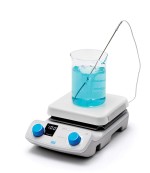 | 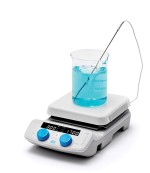 | 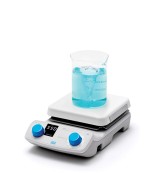 |
|---|---|---|---|
| AREC 7 CONNECT with probe, rod and clamp | AREC.X 7 with probe, rod and clamp | AREC 7 | |
| Torque Compensation | SpeedServo™ | Electronic regulation | Electronic regulation |
| External Temperature Sensor Collection | • Pt100 (included) | Pt100 (included) VTF (included in the system with VTF) (IM0697) | |
| Thermoregulation Range (°C) | Room temp to 300 | Room temp to 250 | |
| Thermoregulation accuracy (°C) | ± 0.5 (PT100) | ± 1 (PT100) ± 0.5 (VTF) | |
| Heat Controller Type / Temperature Regulation (°C) | Digital / Room temp up to 550 | Digital / Room temp up to 550 | Digital / Room temp up to 550 |
| Timer | Yes (1 min - 99 h 59 min) | ||
| Autoreverse | Yes (5 s - 99 min 59 s) | ||
| Intermittent Mode | Yes (5 s - 99 min 59 s) | ||
| Dimensions (W x H x D) (mm) | 203 x 94 x 344 | 203 x 94 x 344 | 203 x 94 x 344 |
| Ermes Connection | Yes via Wi-Fi | ||
| Rowe Code | IM0694 | IM0696 | IM0686 |
![]() 27 Feb 2024
27 Feb 2024
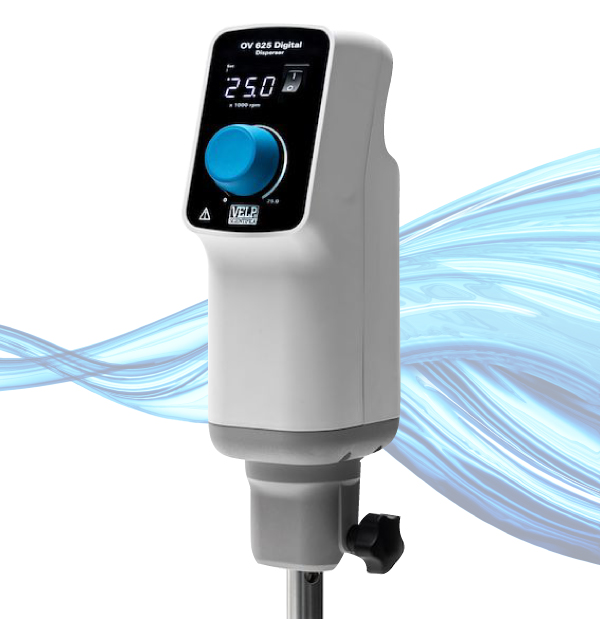
IH0316 VELP OV625 Digital Homogenizer and Disperser
In the ever-evolving landscape of laboratory technology, digital dispersers have become indispensable tools for achieving precise and efficient sample preparations across various industries such as Cosmetics, Food and Feed, Pharma and Biotech, and much more.
These versatile instruments play a significant role in achieving homogeneous dispersions and high speed mixing of various materials, ensuring effective sample processing, and, consequently, accurate analytical results.
Dispersion refers to the process of distributing or spreading a substance, such as particles or components, evenly throughout a medium. In the context of laboratory work, dispersion often involves creating a homogeneous mixture or distribution of particles within a solution or matrix, ensuring uniformity and consistency.
In the context of laboratory dispersers, like the OV 625 Digital Disperser, homogenization is facilitated through the mechanical action of a high-speed rotating blade (the rotor) within a stationary stator.
The instrument creates a shearing effect, breaking down aggregates and dispersing particles evenly in the sample solution. The speed and efficiency of this process contribute to the homogeneity of the final mixture and the achievement of the desired particle fineness.
Various dispersing tools can be used to achieve effective sample dispersion based on a specific laboratory application.
The choice of dispersing tool depends on factors such as the sample type, size, and the degree of dispersion particle fineness required: selecting the proper dispersing tool is crucial to achieving the best performance and high reproducibility.
Different types of dispersing tools are required to process different fluids. Sometimes it is necessary to use two dispersing tools to achieve specific requirements. Together with the convenient quick disconnect and installation system, it is possible to effortlessly change the dispersing tool so you can move onto the next step of the homogenization process.
![]() 06 Feb 2024
06 Feb 2024
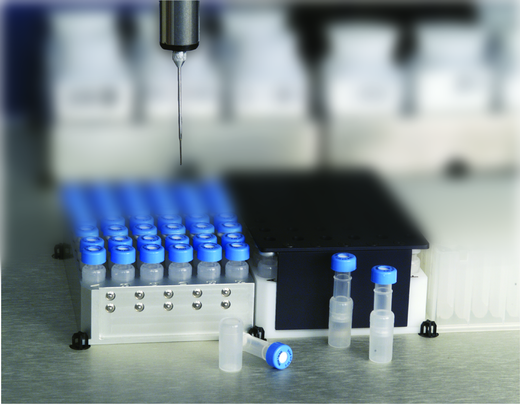
Cytiva's Whatman Mini-UniPrep Syringeless Filters
Cytiva's Whatman Mini-UniPrep Syringeless Filters provide efficient and cost-effective sample preparation for HPLC and other applications.
These syringeless filters combine four products into one solution for efficient chromatography sample preparation across a broad range of applications. They are built for fast and easy high performance liquid chromatography sample preparation and analysis.
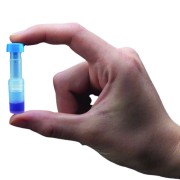 All-in-one filtration device for quick and cost-effective chromatography sample processing
All-in-one filtration device for quick and cost-effective chromatography sample processing
Mini-UniPrep syringeless filters can be used either manually or with a multicompressor. The multicompressor allows for processing of multiple filtration samples, further reducing sample preparation time for chromatographic analysis.
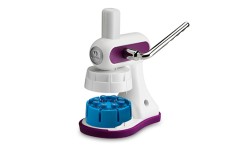
Using the Mini-UniPrep syringeless filter is easy. If you are not using a multicompressor, simply place your sample in the Mini-UniPrep device, insert the plunger, and compress. Your sample is filtered rapidly and easily. The unique design allows the liquid sample to be forced into the reservoir of the plunger. Any excess air escapes though the vent hole, until the seal is engaged. The Mini-UniPrep syringeless filter can then be used in an autosampler.
![]() 29 Nov 2023
29 Nov 2023
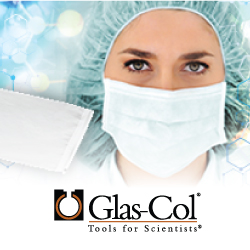
Glas-Col is a leading manufacturer of laboratory and industrial equipment who produce high-quality heating mantles, laboratory shakers and mixers, air-filtration systems and a wide variety of laboratory products such as glove bags.
Glove bags are flexible, inflatable chambers with integrated gloves that allow work in an isolated and controlled environment. Depending on the model ordered, the equipment sleeve is sealed with either a zip type closure or a two-piece clip. Cotton gloves and a nylon gas port sleeve are also included for added convenience. Glas-Col glove bags are made from high clarity polyethylene for added strength and visibility.
Glove bags are used like a rigid glove box but with greater flexibility. It is made of polyethylene, with integrated gloves. Equipment is placed in through the sleeve ports and the bag is then inflated to work on the inserted items.
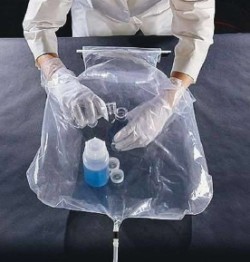
These glove bags are economical enough to be used once and discarded when contaminated, however durable enough to be used over and over if desired.
Ideal for keeping sensitive materials from contact with air or moisture. Use it whenever an inert atmosphere is required for particular reactions or in handling reagents.
These glove bags can be used alongside rigid glove boxes, as they can be purged faster with less gas, and can be easily adapted to fit your specific requirements.
Glas-Col mixers are an affordable laboratory vortexer which can be used in conjunction with various types of tubes. Applications include solution phase synthesis, for when a good mixture of heterogeneous solutions is needed. In Solid Phase chemistry the pulsation feature is extremely useful for the full reaction of resins, and other materials.
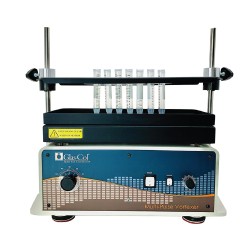
The cartridge design of Glas-Col’s Multi-Pulse Vortexer allows the user to switch the size of tubes to be mixed simply by changing the cartridge size, thus eliminating the need for extra racks. Cartridges are available for test tube and centrifuge tubes, either capped or uncapped. Each cartridge is constructed of chemical resistant foam and ABS plastic. An optional blank cartridge allows the flexibility to use standard tube racks. The unit easily adjusts for different height tubes and allows them to remain visible during mixing. Additional sample can be added to uncapped tubes without stopping the mixing action.
![]() 18 Oct 2023
18 Oct 2023
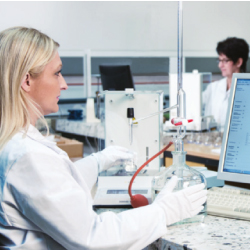
Rowe Scientific Pty Ltd can supply you with DAkkS calibrated / NATA accepted laboratory glassware.
BRAND has a calibration laboratory accredited by DAkkS (Deutsche Akkreditierungsstelle GmbH) in accordance with ISO 17025. Each item of glassware is accompanied by an item specific calibration certificate which is internationally recognised.
Computer controlled systems ensure maximum precision in a fully automated production line. ‘Statistical Process Control’ guarantees the smallest deviation from nominal capacity (Accuracy) and narrow scatter of individual values (Coefficient of Variation).
BRAND uses flexible screen stencils for all graduated instruments to apply the calibration marks accurately so that precision is maintained for all intermediate volumes. High quality inks combined with a careful annealing process provides durable graduations. BRAND can also supply ISO 17025 certifed pipettes (Transferpette® S) and Liquid dispensers (Dispensette® S).
No plastic packaging material is used in packaging your calibrated glassware. This means less internal packaging is required whilst using 100% recyclable material. Know that your glassware is safe while minimising waste.
To speak to a Rowe Scientific Pty Ltd representative about how we can supply you with DAkkS certified volumetric glassware, click the button below.
![]() 09 Aug 2023
09 Aug 2023
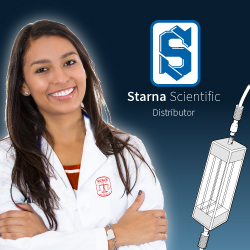
Rowe Scientific Pty Ltd is now the official distributor for Starna® Scientific Australia wide. We offer a wide variety of Starna® products which are manufactured in the Starna® Scientific factory founded in 1964, whose lineage of optical expertise is traceable to the early part of the last century.
During the 1950s, the founding members of the company developed and perfected the technique of fully fusing optically polished component parts by heat alone, without distortion.
Starna® Scientific is the manufacturing division of the international group of Starna® companies, who have a recognised world-wide reputation for quality, service, innovation and co-operation in the production and supply of spectrophotometer cells, optical components and certified reference materials.
All manufacturing processes are carried out in an ISO 9001 certified production facility. Starna® is accredited to ISO 17034 as a Reference Material Producer, and the scope of the Calibration Laboratory’s ISO/IEC 17025 accreditation is the widest in the industry. Starna® Certified Reference Materials are calibrated with full traceability to National Institute of Standards and Technology (NIST) primary standards in the USA, or to other National Metrological Laboratories (NMLs), where applicable.
A unique blend of in-house optical production skills includes: cutting, slicing, grinding, polishing, drilling, ultrasonic drilling, glassblowing and heat fusion. A range of metallic, multi-layer and anti-reflection coating processes are also employed. Stringent cleaning techniques and mandatory inspection procedures ensure that all optical products leave the factory in a pristine contamination-free condition, carrying an unconditional guarantee against defects.
Download the latest Starna® Catalogue here for a complete list of products and specifications.
For further information on Starna Cuvettes, Optical cells and Sprectrophotometer cells, click the button below 
![]() 18 Jul 2023
18 Jul 2023

A recent review showed more than 500,000 people in Australia are known to have a food allergy, with many more going undiagnosed. Food manufacturers protect those with food allergies by clearly labelling their products with a list of ingredients which may cause adverse reactions. Testing for the presence of food allergens can help ensure food manufacturers, that an unlabelled, and potentially dangerous allergen, did not make its way into food products.
Rowe Scientific Pty Ltd is a distributor for Neogen, who manufactures a wide range of antibody-based assays which are validated for detecting low levels of target allergens in a wide variety of food and environmental samples. The qualitative Reveal® and Reveal 3-D test kits are suitable for a wide variety of allergen tests. These assays can rapidly detect low levels of allergen in a wide variety of food and environmental samples, utilising an easy to use methodology.
The quantitative Veratox® and BioKits tests provide numerical measurements and are validated for quantifying low levels of allergen in food and rinse samples. They can also provide qualitative results on environmental swabs. The number one case of global food recalls are undeclared or improperly labelled food allergens. Costs of non-compliance can be significant while testing only takes a few minutes and can cost very little in comparison. Do your allergen control systems provide you with confidence? It is required by law for food manufacturing facilities to ensure food allergens, as a food safety hazard, are properly managed and effectively controlled.
Testing can play an important part in validating and verifying food allergen control plans.
The Reveal 3-D tests can be used to screen for the presence of low levels of allergens in environmental samples (swabs and clean-in-place rinses) virtually anywhere. The Reveal 3-D tests feature a unique overload line designed to prevent over-saturation (hook effect) and alert the user of a high positive result. Sample preparation and testing takes 5 minutes, making them excellent choices for on-site food allergen control. Each kit contains everything needed for testing ten samples. To view a list of Neogen Reveal 3-D kits on our webstore, simply click on the graphic below. 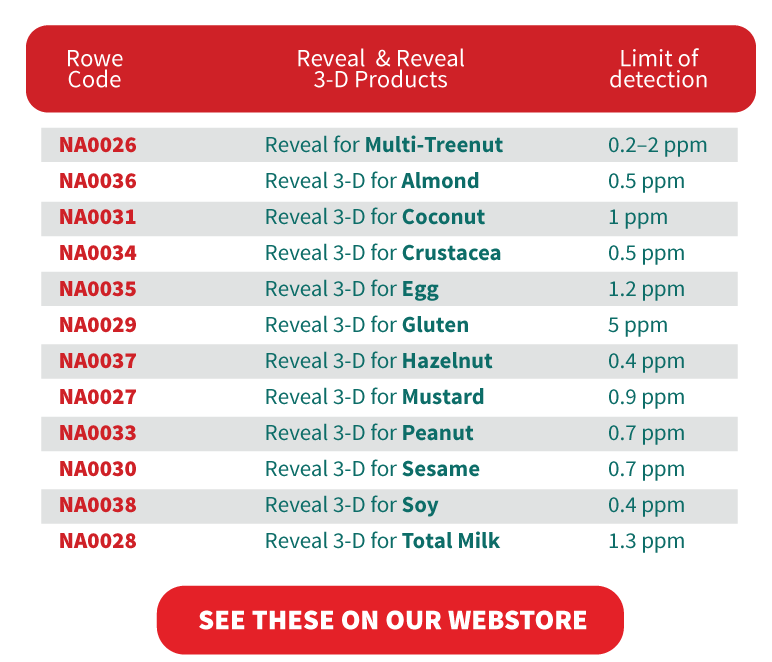
![]() 08 Feb 2023
08 Feb 2023
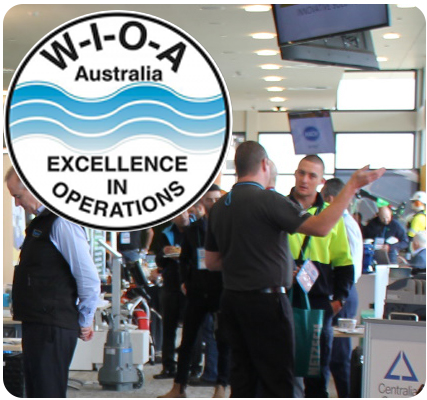
Further details about event can be found on the WIOA conference web page here.
https://wioaconferences.org.au/sa-2023/
![]() 03 Feb 2023
03 Feb 2023


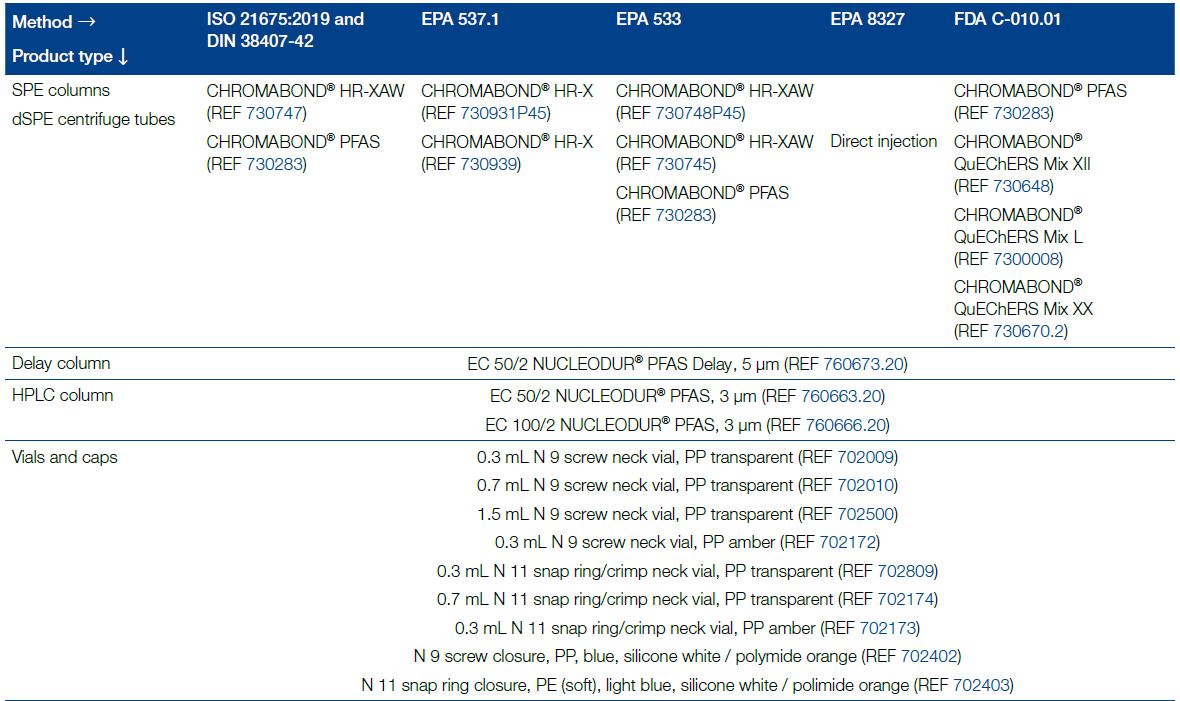
| Product Description | REF | PACK OF | ROWE CODE |
|---|---|---|---|
| SPE columns dSPE centrifuge tubes | |||
| CHROMABOND® PFAS, 85 μm, 6 mL / 300 mg | 730283 | 30 | VC0513 |
| CHROMABOND® HR-XAW, 85 μm, 6 mL / 500 mg | 730745 | 30 | VC0576 |
| CHROMABOND® HR-XAW, 85 μm, 3 mL / 60 mg | 730747 | 30 | VC0577 |
| CHROMABOND® HR-X, 45 μm, 3 mL / 200 mg | 730931P45 | 30 | VC0554 |
| CHROMABOND® HR-X, 85 μm, 6 mL / 500 mg | 730939 | 30 | VC0557 |
| CHROMABOND® QuEChERS Mix XII, extraction mix consisting of: 4000 mg MgSO4, 1000 mg NaCl, individually weighed and filled into 15 mL centrifuge tubes (PP) with screw cap (PE) | 730648 | 50 | VC0449 |
| CHROMABOND® QuEChERS Mix L Diamino / Carbon clean-up mix consisting of: 900 mg MgSO4, 300 mg CHROMABOND® Diamino, 150 mg CHROMABOND® Carbon, individually weighed and filled into 15 mL centrifuge tubes (PP) with screw cap (PE) | 7300008 | 50 | VC0578 |
| CHROMABOND® QuEChERS Mix XX Diamino clean-up mix (acc. to AOAC) consisting of: 150 mg MgSO4, 50 mg CHROMABOND® Diamino individually weighed and filled into 2 mL centrifuge tubes (PP) with snap cap (PP) | 730670.2 | 50 | VC0579 |
| HPLC columns | - | - | |
| EC 100/2 NUCLEODUR® PFAS, 3 μm | 760666.20 | 1 | VC0544 |
| EC 50/2 NUCLEODUR® PFAS, 3 μm | 760663.20 | 1 | VC0543 |
| EC 50/2 NUCLEODUR® PFAS Delay, 5 μm | 760673.20 | 1 | VC0545 |
| Vials and caps | - | - | |
| 0.3 mL N 9 screw neck vial, PP transparent, 11.6 x 32.0 mm, inner cone | 702009 | 100 | VV0039 |
| 0.7 mL N 9 screw neck vial, PP transparent, 11.6 x 32.0 mm, round bottom insert | 702010 | 100 | VV0076 |
| 1.5 mL N 9 screw neck vial, PP transparent, 11.6 x 32.0 mm, flat bottom | 702500 | 100 | VV0077 |
| 0.3 mL N 9 screw neck vial, PP amber, 11.6 x 32.0 mm inner cone | 702172 | 100 | VV0075 |
| 0.3 mL N 11 snap ring/crimp neck vial PP transparent, 11.6 x 32.0 mm inner cone | 702809 | 100 | VV0097 |
| 0.7 mL N 11 snap ring/crimp neck vial, PP transparent, 11.6 x 32.0 mm round bottom inse | 702174 | 100 | VV0099 |
| 0.3 mL N 11 snap ring/crimp neck vial, PP amber, 11.6 x 32.0 mm inner cone | 702173 | 100 | VV0098 |
| N 9 screw closure, PP, blue, center hole, silicone white / polyimide orange, 1.0 mm | 702402 | 100 | VC0512 |
| N 11 snap ring closure, PE (soft), light blue, center hole, silicone white / polyimide orange, 1.0 mm | 702403 | 100 | VC0566 |
| - | - | - | - |
| - | - | - | - |
| - | - | - | - |
![]() 29 Jul 2022
29 Jul 2022

Haier laboratory refrigeration and freezer solutions are designed and developed for long term storage of biological products and chemicals in the laboratory across a wide range of industries, such as pharmacies, blood banks, hospitals, epidemic prevention services, research institutes, and biological engineering institutes, to name a few.
Rowe Scientific can supply and install a range of Ultra Low Temperature freezers, Explosion proof - Spark Free refrigerators and pharmaceutical refrigeration solutions. We also offer after sales support, servicing and repair for your refrigerator or freezer from our in-house after sales service department.
For further information, availability and pricing, download the brochure below, or contact your nearest Rowe Scientific representative today.
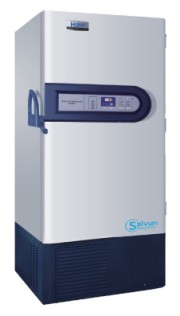
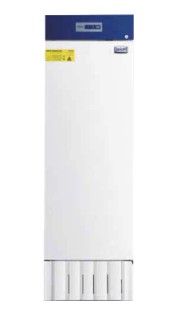
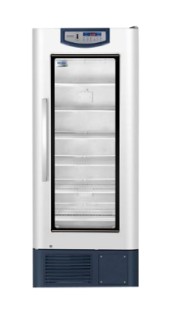
![]() 10 Nov 2021
10 Nov 2021
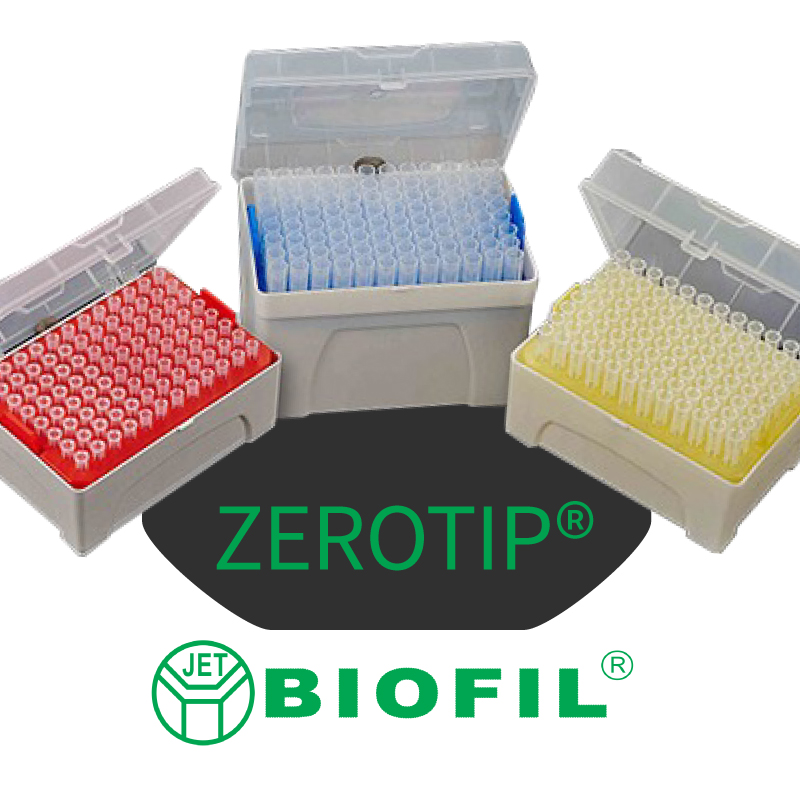
JET ZEROTIP® are a pipette filter tip manufactured from a super clear high quality polypropylene. The surfaces of the tips are produced through a special process which makes the inner tip surface super hydrophobic, which significantly reduces sample loss and provides substantially higher reproducibility when working with critical media. JET ZEROTIP® are free of Nucleic Acids, Pyrogens/Endotoxins, PCR Inhibitors and trace metals which makes them ideal for biological samples that contain detergents. They are also Non-Pyrogenic and are DNase/RNase-free.
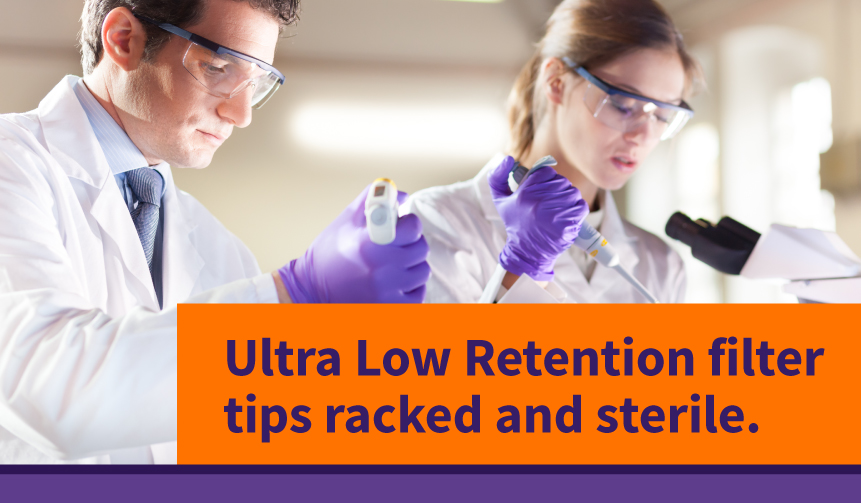
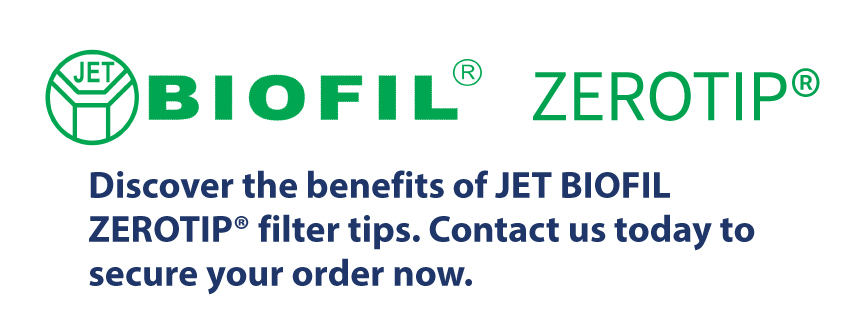
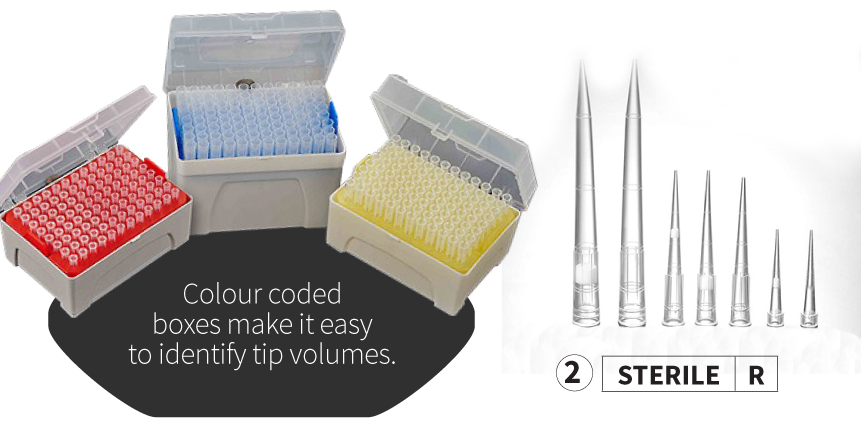

![]() 17 Sep 2021
17 Sep 2021
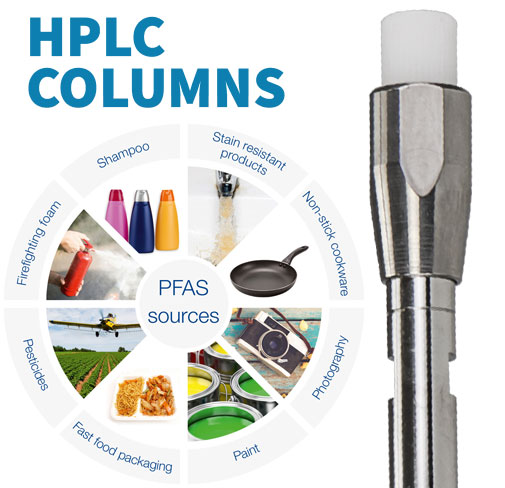
Macherey Nagel have expanded the HPLC product line to include the NUCLEODUR® PFAS, 3 µm HPLC and UHPLC columns
Polyfluoroalkyl substances (PFAS) are a group of highly stable synthetic organic compounds which are used in a wide variety of industrial and commercial applications as additives in consumer products such as fire-fighting foam, fiber coating, cookware, paper finishing and food packaging to name a few. Within mainstream media they are often referred to as "forever chemicals". These substances strongly bioaccumulate within our natural environment and have become ubiquitous throughout the world since the 1940's.
NUCLEODUR® PFAS, 3 µm HPLC columns provide a solution for analysing and detecting these substances. Macherey Nagel columns show a high batch-to-batch reproducibility which make them well suited for LC-MS/MS analyses due to low bleeding characteristics. The new columns are available in a 2 mm ID and 100 or 50 mm lengths. Each column is accompanied by documentation which certifies and identifies each column to it's respective batch for PFAS analyses in the laboratory.
NUCLEODUR® PFAS Delay, 5 µm columns provide high retention for PFAS compounds and are used to retain PFAS contaminants from the HPLC system, which could otherwise falsify the sample to be analysed. For this purpose the NUCLEODUR® PFAS Delay column is connected in flow direction between the mixing vessel and the sample injector, as seen in the flow diagram below.

Stainless steel HPLC columns for analytical or preparative applications are an ideal choice for your daily labwork.
NUCLEOSIL HPLC phases have gained wide acceptance as routine chromatographic packings for differing fields in modern chromatography. It is one of the first spherical silicas used in HPLC and is a reliable choice for routine analyses.
NUCLEODUR silica is an ideal base material for modern HPLC phases. It is the result of MACHEREY-NAGEL's pioneering research in chromatography for almost 50 years. NUCLEODUR HPLC columns with 1.8 µm particle size for increased separation efficiency are used for UHPLC applications.
Due to core-shell technology NUCLEOSHELL columns provide efficient separation results with a comparably lower back pressure to fully porous materials.
Please contact your nearest Rowe Scientifc Representative for further information.
![]() 23 Jul 2021
23 Jul 2021
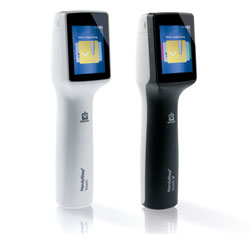
Repetitive pipettes are the first choice when it comes to efficient liquid dispensing. Positive displacement pipettes are often the correct solution for pipetting viscous media. The new HandyStep® touch from BRAND combines both features.
With the intuitive touchscreen display, you are able to conveniently swipe back and forth between functions and always have an overview of the essential information on your work steps. Operation is easy, even with protective gloves on. The days of manually changing tips are over as on the HandyStep® touch, lightly tapping the eject icon on the display is enough to eject the tip.
The HandyStep® touch repetitive pipette automatically recognises the volume of the new BRAND PD-Tips II. This saves time and reduces the risk of error. Tips from many other manufacturers can also be used, providing maximum flexibility.
Charging is easy and efficient: simply place the HandyStep® touch in the inductive charging stand and the battery automatically starts charging.
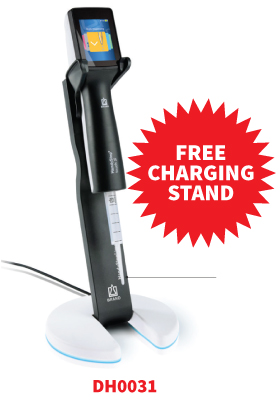
| Code | DESCRIPTION | ||
|---|---|---|---|
| DH0002 | HandyStep® Touch, including universal AC adaptor and sample pack of PD tips 0.5, 1.25, 5 and 12.5mL, includes lithium battery | BUY NOW | |
| DH0031 | HandyStep® Touch S including universal AC adapter and shelf rack, includes lithium battery | BUY NOW | |
| DC0046 | Charging stand for HandyStep Touch/Touch S | BUY NOW |
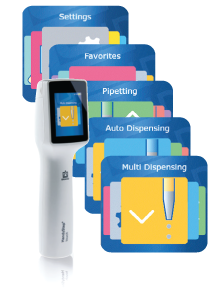

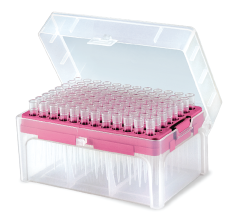
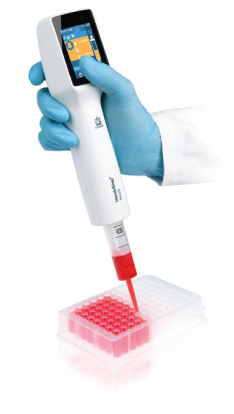
![]() 01 Jul 2021
01 Jul 2021
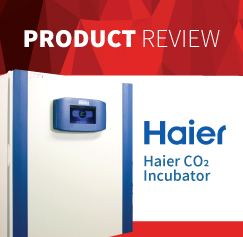
Rowe Scientific would like to introduce an informative and in-depth look into the HCP-168 Haier CO₂ Incubator. This is a part of our “Product Review” series of videos which are designed to show you key features and benefits from our quality range of instruments and consumables. In order to be notified of future reviews please visit our YouTube page and subscribe to our channel.
The Haier Biomedical CO₂ Incubator with Internet of Things (IoT) functionality and a 180°C dry heat sterilisation feature, provides a safe reproducible growth environment for biological cell cultures.
Ideal for use in a typical Life Science Laboratory setting with the added benefit and flexibility of installing in an under-bench setting, or even in a stacked configuration. Please see our video review below:
Above is an example of the abilities of the Haier CO₂ Incubator. Should you require further product information or purchasing details, please contact us by clicking the link below.
Click here to download the Haier Brochure

![]() 03 May 2021
03 May 2021
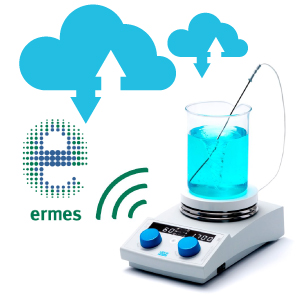
The VELP Ermes cloud platform is an online web based data and instrument management tool with the power and versatility to improve your laboratory workflow.
Watch how you can transition from time-consuming paper or spreadsheets management to a data-rich modern technology Cloud Platform with VELP ERMES and selected VELP laboratory instruments. This cloud based solution can help you monitor and manage multiple instruments and consumables from your PC, Tablet or Smartphone.
With real time visualisation of your analysis and instrument working conditions, VELP Ermes offers peace of mind and total control of your VELP instruments thanks to the ability in remotely stopping the instrument from anywhere via your smart device or computer. Your important data is safely stored with the maximum level of encryption following the highest cyber-security standards.
To learn more about how the Ermes Cloud platform can optimise your laboratory workflow, click the below video to watch a recorded webinar presentation with VELP product and instrumentation experts.

![]() 14 Dec 2020
14 Dec 2020
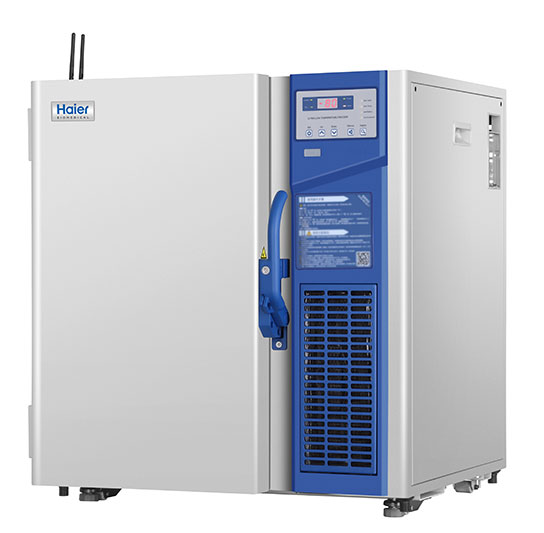
A vaccine is a biological substance which becomes less effective or in a worst-case scenario, completely destroyed when the recommended storage temperatures are not strictly adhered to. Therefore, the safe and reliable cold storage of vaccines, right up to when it is administered to the patient is critical.
The Haier Biomedical Under-bench 100L ULT freezer is an ideal choice in ensuring an essential part of the ‘cold chain’ is adhered to with the added peace of mind of a dedicated purpose-built laboratory ultra-low temperature freezer.
The Haier Biomedical Under-bench 100L ULT freezer is also an ideal choice for industries in research, hospitals, disease prevention & control centres, blood stations, scientific research institutes, electronics, chemical enterprise laboratories and biomedical engineering research institutes.
With a capacity of 100L, this freezer can store up to 6000 samples. With an overall height of 810mm the unit will fit under most laboratory benchtops for convenient and economical use of space. Additionally, two freezers can be stacked on top of each other eliminating the need for extra laboratory floor space.
With an impressive low overall power consumption of only 5.5 kWh/day, it helps keep your laboratory running costs at a minimum. This is achieved by the use of an efficient hydrocarbon compressor, multi-layered seals and a dual door design to eliminate cold energy losses when opening and closing the freezer compartment.
A clever noise reduction cabinet and system design emits a low sound level of only 46.8dB thus reducing overall noise emissions and ensuring a comfortable working environment within your laboratory. The added security of an integrated keyed locking mechanism with the provision of an addition padlock ensures your valuable samples are kept safe.
Connectivity is provided by a USB interface for access to historical data from the inbuilt sensors. A remote alarm port and an RS-485 interface facilitates easy connection to your laboratory management system, alerting the laboratory manager should there be a fault.
We have more models available in various capacities, performance and technological features.

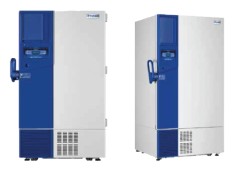
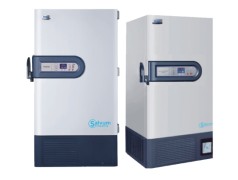
For further information download the Haier product catalogue, or contact us directly below.
![]() 08 Dec 2020
08 Dec 2020

Rowe Scientific offers the Charm Sciences novaLUM II-X system for rapid ATP (adenosine triphosphate) detection. Used with PocketSwab Plus, verification of surface hygiene is achieved in only 5 seconds. PocketSwab Plus detects even the lowest levels of ATP, minimising the risk of product recalls, reduced shelf life and cross contamination.
Increase efficiency, remove the guesswork, view the invisible.
Used by food and beverage manufacturers, pharma and healthcare industries alike, PocketSwab Plus provides an objective tool for hygiene monitoring. PocketSwab Plus rapidly verifies a surface is clean so that operators can confidently proceed with their work safely, or immediately implement corrective action. Contact your Rowe Account Manager for more information and to schedule an obligation-free demonstration.
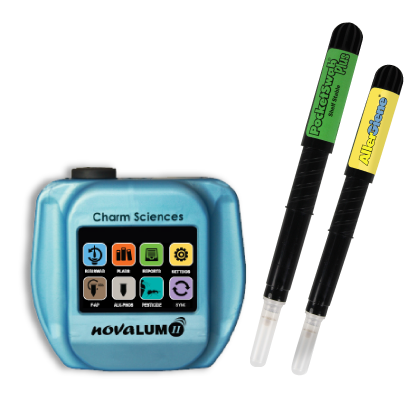
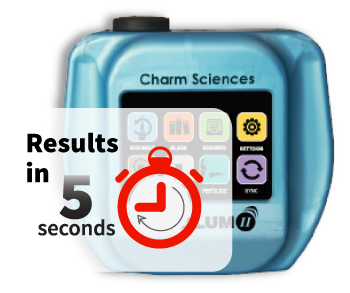
![]() 25 Nov 2020
25 Nov 2020

Per- and polyfluoroalkyl substances (PFAS) are used for many daily applications e.g. food packaging and textile coating because of their non-sticky properties. Most PFAS are hazardous substances which need to be monitored globally. Due to their increasing appearance in the environment new product solutions are of great demand. CHROMABOND PFAS provides such a solution for the enrichment of per- and polyfluoroalkyl substances (PFAS) from water.
In contrast to other products, this special phase enables users to enrich not only acidic PFAS but also various other PFAS substance classes (alcohols, sulfonamides, ethers) with high recovery rates in one application. This is possible due to the different retention mechanisms of the sorbents (interactions according to EPA method 537.1 and 533, DIN 38407-42).
The application note Solid phase extraction of per- and polyfluoroalkyl substances (PFAS) from drinking water shows the successful sample preparation (solid phase extraction) of PFAS from drinking water. The subsequent analysis was performed by NUCLEOSHELL RP 18plus HPLC column.
When conducting PFAS analysis, it is crucial to select the right vials and closures for this application. Adsorption effects of glass as well as possible contamination of the sample by particles from the septa, especially from the PTFE lamination, may put your analysis results at risk.
If you want to learn more, read the detailed PFAS test report showing the performance of different Macherey Nagel vials and fluorine-free closures in PFAS analysis.
![]() 07 Jul 2020
07 Jul 2020
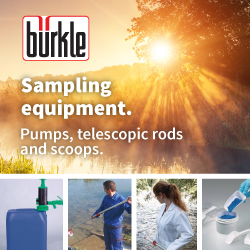
Rowe Scientific offer a range of Burkle sampling products to suit your specific needs, both out on the field and in the laboratory.
Burkle was established in 1950 and are a leader in manufacturing high quality, precision sampling products. The Burkle range is too vast to list, however, if you would like to discuss your sampling needs, please call your local Rowe Scientific consultant, or download the Burkle catalogue from our website by clicking below.

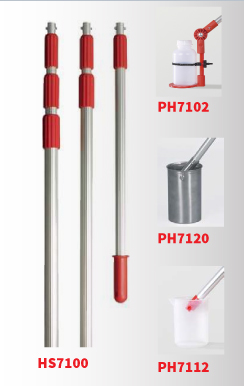
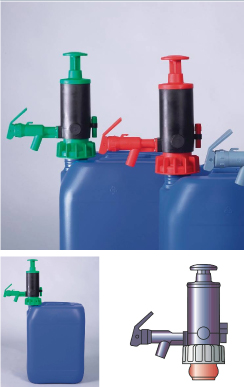
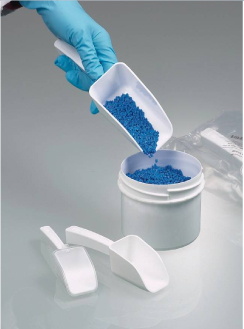
![]() 01 Apr 2020
01 Apr 2020
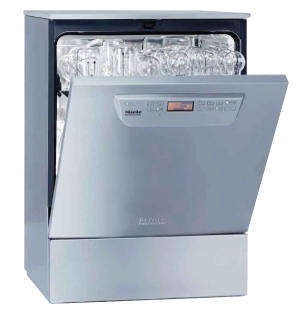
Rowe Scientific offer a range of professional laboratory washers from the Miele professional range. Miele offers a comprehensive and systematic approach for the safe and thorough reprocessing of a wide range of laboratory glassware, to ensure a reproducible and reliable result.
Suitable within the fields of organic, inorganic and physical chemistry, biology, microbiology, hospital laboratories, pharmaceutical, food-processing and cosmetics industries. Below are a few models available in our current inventory.

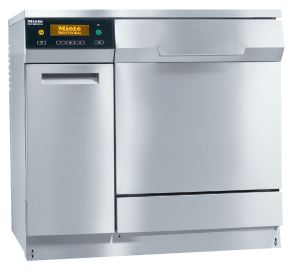 Quality
Quality
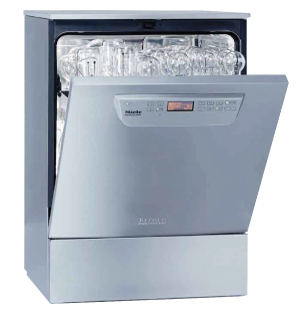
|

|
![]() 01 Apr 2020
01 Apr 2020
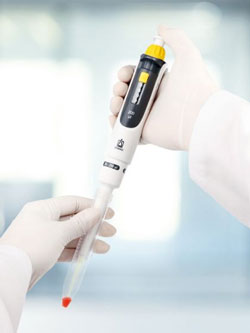
The Transferpette® S air displacement pipette allows you to work efficiently and ergonomically with both small and large volumes. Low operating forces and a short stroke ensure relaxed pipetting, even during long periods of use. Due to the enhanced ergonomics, the Transferpette® S provides a comfortable grip in any hand position, whether you are right or left-handed, or have big or small hands. Changing your grip is not necessary, since the Transferpette® S provides true one-hand operation: set the volume, pipette and eject the tip.
The volume change protection is also easy to operate with gloves on and protects your pre-set volume against accidental adjustment. The Transferpette® S also features Easy Calibration technology, which enables simple calibration and can be accomplished without the use of tools.
|
|
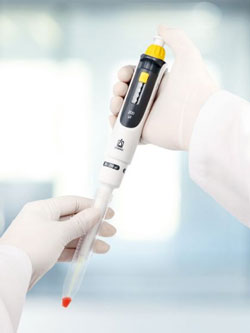
|
|
Features and benefits of the Transferpette S at a glance. |
|
|
|
Genuine one-hand operationSet the volume, pipette and eject the tip, all without changing your grip Volume-change protectionSecures the set volume from accidental adjustment ErgonomicLow operating forces and short stroke Easy Calibration technologySimple adjustment, without tools Slim shaftEasy access within narrow vessels such as centrifuge tubes. |
![]() 04 Feb 2020
04 Feb 2020
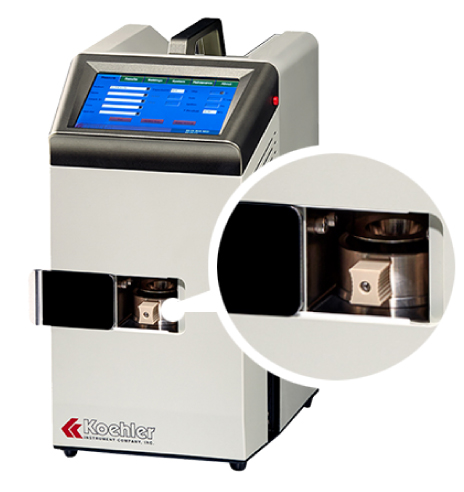
Rowe Code: KA0053
Automatic Microscale Continuously Closed Cup Flash Point Tester
Under specified test conditions, when a sample is heated to the temperature called flash point, the sample vapor and air mixture are ignited instantly. Flash Point is one of the indicators for the evaluation of a materials' combustion tendency. If the flash point Is low, the combustion risk would be high. As for transport and safety regulation, flash point is used for the classification of "flammable liquids". Also, flash point is used for quality control index or determining the existence of highly volatile or flammable substances in relatively nonvolatile or nonflammable matter, e.g. lubricant mixed with a small amount of diesel or gasoline.
The Koehler K24880 Microscale Continuously Closed Cup Flash Point Tester works in the following manner. The temperature of the analyzer is adjusted to at least 18 °C below the expected flash point. The sample is injected into the sample cup. The operator must ensure that the sample and sample cup temperature are both at least 18 °C below the expected flash point (the sample and sample cup may be cooled if necessary). Then the sample cup is raised towards the oven forming a closed test chamber, which is not sealed.
After every ignition, the proper volume of air goes into the test chamber to supply the next ignition with oxygen to burn. The pressure in the unsealed closed test chamber should be ambient atmospheric pressure, except during the short period of air introduction and the time when the flash point is achieved. The pressure increase comes after discharge of air, so each time after the air discharges, the chambers pressure is higher than ambient atmospheric pressure. When the pressure increase exceeds the specified limit, this is recorded as the flash point temperature (which has not been corrected).
|
|
Test the flash point of potentialy volatile liquids instantly. |
Fully Automatic
Small Sample Size
High Performance
Industrial Touch Screen User Interface
USB and Network Connections
Software Capabilities
|
|
Specifications |
|
Conforms to the specifications of:
|
ASTM D6450 and D7094
Excellent Correlation to: ASTM D93, D3828; EN ISO 6379 / 3680; ISO 2719; SH/T 0768, SH/T 3077.1, SH/T 3077.2, DL/T 1354, GB/T 261, GB/T 21615, GB/T 5208, GB/T 21790 |
|
Temperature Range:
|
-30 °C to 405°C (-22 °F to 788 °F) below 0 °C an external cryogenic recirculatory is required
|
|
Heating Rate:
|
2.5 °C/min ± 0.3 °C/min or 5.5 °C/min ± 0.5 °C/min; can be customised in the range of 0.5 to 12 °C/min
|
|
Temperature Accuracy:
|
± 0.1 °C
|
| Pressure Range: | 0 kPa to 200 kPa |
| Sample Volume: | 1 mL or 2 mL |
| Ignition method: | High voltage electric ignition |
| Stirring Rate: | Can be customised from 50 RPM to 300 RPM |
| Interfaces: | RS232, USB, Ethernet |
| Width x Depth x Height (cm): | 22.5x31x41.5 |
![]() 18 Jan 2020
18 Jan 2020
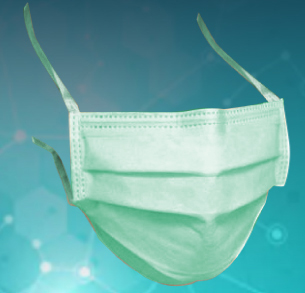
These Australian made surgical face masks are manufactured with a 3 layer design along with an ultra-soft non-reactive inner layer to maximize facial comfort. Manufactured to Australian standard: AS 4381:2002
Med-con masks test at a PFE (particulate filtration efficiency) of 99.1% with a particle size of 0.1μm. Breathability and comfort whilst wearing the mask is ensured with less than 1.5 units of delta pressure differential. May also be used in an industrial application where similar particulate bacterial protection is required.
Made to Australian standards, these masks are guaranteed to meet the highest level of quality to the end user. The automated process of manufacturing reduces potential bio-burden contamination therefore ensuring consistency and guaranteed batch-to-batch regularity. Material selection combined with Ultrasonic Sealing provides long time comfort and performance for the user.

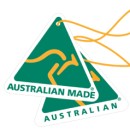
| Code | DESCRIPTION | ||
|---|---|---|---|
| HM0196 | Mask, Surgical Face, Fluid Resistant With Ties | - | STOCK EXHAUSTED |
| HM0042 | Mask, Surgical Face, Fluid Resistant With Loops | - | STOCK EXHAUSTED |
![]() 12 Dec 2019
12 Dec 2019
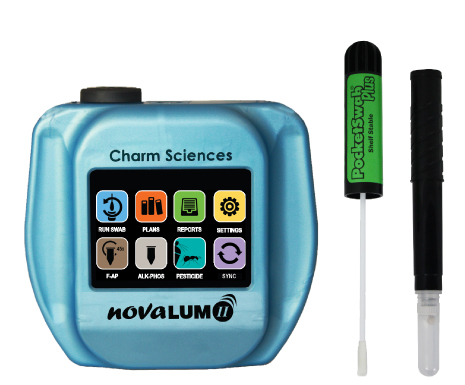
The F-AP Fast Alkaline Phosphatase Test (F-AP)
|
|
 With detection at levels as low as 20 mU/L, well below established US and EU regulatory thresholds of 350 mU/L, F-AP provides an early warning indicator of improper pasteurization. F-AP is approved for use by US National Conference of Interstate Milk Shipments (NCIMS), and New Zealand Ministry of Agriculture and Forestry (MAF). All Australian states have also approved the method being used in accordance with manufacturer’s instructions to undertake phosphatase testing to assess the effectiveness of pasteurization for liquid milk products.
Benefits of F-AP Test Include:
|
Click below to find out more about Charms novaLUM II and Swabs. |
|
novaLUM II X - ATP detection system. |
|
|
|
Quick swab insertionNo lids or latches USB or WIFIFaster data transfer Rechargable / replaceable battery9 hour run-time Touch screenExtremely easy menu selection Ergonomic designA durable molded casing allows for fast texting-like operation High resolution displayBacklit, sunlight-readable alphanumeric display Temperature probe / battery recharge portWater proof port |
![]() 31 Jul 2019
31 Jul 2019
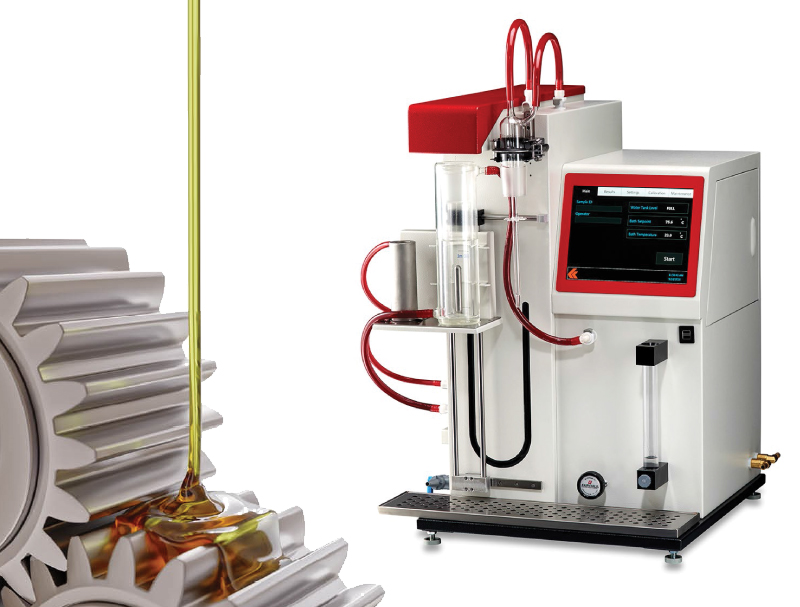
K88539 Automatic Air Release Value Analyser
Rowe Scientific Pty Ltd would like to announce the latest product from Koehler, the K88539 Automatic Air Release Value Analyser. This innovative instrument is commonly used to determine the ability of a turbine, hydraulic or lubricating oil to separate entrained air. This is a key performance characteristic in applications where agitation causes a dispersion of air bubbles in the oil.
In order to discern air release properties, the sample is heated to a specified test temperature and blown with compressed air. After the air flow is ceased, the time required for the air entrained in the oil to reduce in volume to 0.2% gives the air bubble separation duration.
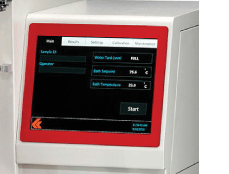 Includes an integrated touch screen control panel, which guides the user from start to finish of the test operation, and provides density calculations and timing operations for measuring the air release value of the test sample.
Includes an integrated touch screen control panel, which guides the user from start to finish of the test operation, and provides density calculations and timing operations for measuring the air release value of the test sample.
The test unit conforms to the American Society for Testing Materials (ASTM) D3427, IP313 and related specifications. Included is an integrated circulating bath and balance, an air bath for the sinker, an automatic lift system that moves the test vessel from air source to balance sinker, and also automatically measures the time for air release for maximum convenience and reliability.

Other state-of-the-art features include an integrated circulation bath with water level indicator, integrated balance, air tube security clamp mechanism and automatic jacketed test vessel draining.
Safety features include compressed air heater overtemperature and overpressure protection circuitry.
A drying oven is available as a supplemental accessory for warming test oil to temperatures of up to 100°C
Temperature range: Ambient to 75°C
Sample Temperature Stability: ±0.1 °C
Air Temperature Stability: ±0.2 °C
Density: ±0.001 g/mL
For further information or for a quote please contact your nearest Rowe Scientific representative.
![]() 30 Jan 2019
30 Jan 2019

Vacuum filtration setup with a 6 place manifold, filter holders, receivers, funnels, flasks, tubing, vacuum pump and hoses.
If you work in the field of environmental management, industrial quality control or life science, it is imperative that you have the support of a knowledgeable representative who can supply your laboratory with the correct products to accomplish your filtration goals.
With samples requiring filtration, the traditional procedure sees the liquid poured onto a filter paper in a funnel, with the particulate/solid suspended being retained, and liquid slowly collecting in a receiver.
Laboratory filtration with the aid of a vacuum pressure gradient, is a fast and efficient way to filter and obtain your sample. As vacuum is used to aid filtration, the resulting particulate is dryer as opposed to using a more passive, gravity fed system. The filtrate can be collected into a flask via the use of a vacuum manifold.
Rowe Scientific have a range of products to cater for varying vacuum filtration scenarios. We offer 3 or 6 place manifolds, filter holders and receivers, funnels, flasks, tubing, vacuum pumps, connectors and more. We have created 2 kits which enable an easy initial set up for most laboratory applications.
We currently have a great price deal on vacuum filtration kits. Click here to download the PDF brochure.
Contact us today to start building the right vacuum filtration setup for your laboratory.
![]() 29 Aug 2018
29 Aug 2018
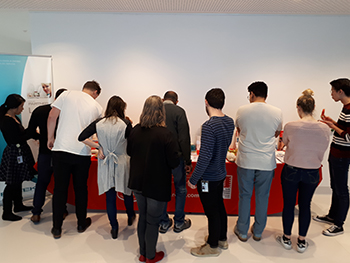
Rowe Scientific exhibiting laboratory and life science products to the staff at The Peter MacCallum Cancer Foundation
The Peter MacCallum Cancer Foundation is a cancer research, education and treatment centre dedicated in the search for cancer cures. It currently is Australia’s only public hospital which is solely dedicated to caring and treating people affected by cancer.
The Peter MacCallum Cancer Foundation currently employs over 2,500 staff, including more than 580 laboratory and clinical researchers, all focused on providing treatments, care and potential cures for cancer.
Rowe Scientific recently held a morning tea showcasing various life science products of interest to the Foundation such as pipettors, nucleic acid extraction kits, specialised gloves, freezer storage, and small laboratory equipment to name a few.
We thank the scientists, technicians, and laboratory managers who stopped by to discuss their various needs and requirements.
Rowe Scientific will continue to supply and support The Peter MacCallum Cancer Foundation with their laboratory needs in order to continue their search for a cure.
To learn more about The Peter MacCallum Cancer Foundation, visit their web site here.
![]() 16 Aug 2018
16 Aug 2018
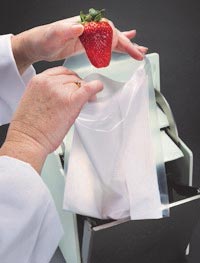
A scientist using a GRADE stomacher bag for testing food samples.
If you’re looking for a cost effective and high quality stomacher bag, then the UK made GRADE range may be the smart choice for your laboratory. GRADE have been manufacturing laboratory bags for over 40 years.
The full range of homogeniser/blender and separator bags come in a range of sizes from 80mL to 3500mL and available in straight or curved bottom, with or without filters. Also available are GRADE disposable straws to pipette samples after homogenisation.
GRADE bags are suitable for all types of blender machines and are made to exacting standards. Leading laboratories world-wide use GRADE bags due to their durable composition and the extremely low likelihood of bags bursting when in use. GRADE bags are manufactured under an ISO 9001 approved quality control system, and have a negligible failure rate.
Grade have made a robust bag by using the correct blend of polymers (high quality, food grade LDPE) for superior strength and elasticity. They are tested up to eight times the normal usage to ensure each individually numbered and traceable batch is up to standard.
The easy-to-open double size (4mm) seal make any faults totally visible, giving you the added security of no leakage. GRADE bags are Gamma irradiated for sample integrity and have a minimum shelf life of five years.
Test them for yourself, ask us for samples. Standard homogeniser/blender bags are available in three sizes 80, 400 and 3500mL. Separator bags come in two types; 400mL with curved or straight bottoms. Call your local Rowe Scientific representative and make the GRADE.
![]() 16 Mar 2018
16 Mar 2018
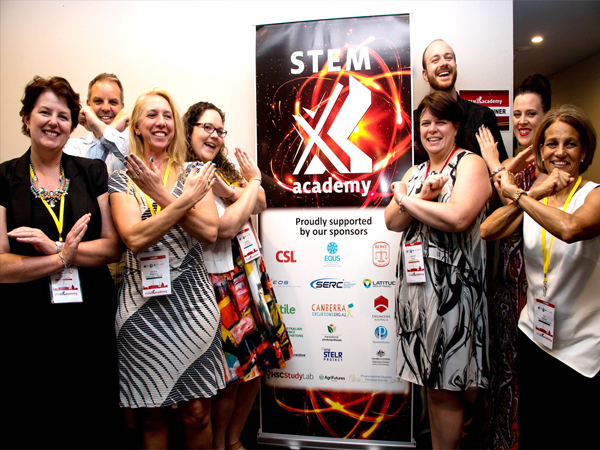
From Left to Right Bronwyn Stanbury, Michael van der Ploeg, Nadia Hagberg, Sophie McConnell, Wendy Rowe, Chad Gramola, Hayley Laidlow and Sue Webber.
The STEM X (Science, Technology, Engineering, Mathematics Exchange) Academy is a five-day residential professional learning program for primary and secondary teachers (total of 70) of science developed in partnership between Questacon – The National Science and Technology Centre, CSIRO and the Australian Science Teachers Association (ASTA) to address the national need for improving teacher and student STEM skills and content knowledge.
The program is doing something no other program does. Rather than just providing teachers with a package of resources to use in the classroom, it is helping them to acquire the skills and confidence to design, develop and implement their own teaching resources.
STEM X Academy does this by partnering teachers with skilled educators from Questacon and CSIRO and expert researchers to collaborate on projects across the five days. This fosters the building of relationships between teachers, schools and the STEM Industry.
The vision for STEM X Academy teachers is to be inspired by research, foster innovation in the classroom, act as a catalyst for change and remain connected creating a national community of practice. Strong evidence exists to suggest that all these objectives are being fulfilled.
2018 STEM X Academy Rowe Scientific Pty Ltd Scholarship Winners:
Queensland: Hayley Laidlow, Osborne State School, Home Hill Qld
New South Wales: Nadia Hagberg, St. Bridgets College, Lake Munmorah, NSW
ACT: Bronwyn Stanbury, Radford College, Bruce, ACT
Victoria: Wendy Rowe, Greenvale Primary School, Greenvale, VIC
Tasmania: Michael van der Ploeg, Table Cape Primary, Wynyard, TAS
South Australia: Chad Gramola, Mt Compass Area School, Mt Compass, SA
Western Australia: Sue Webber, Kalgoorlie Boulder Community HS, WA
Northern Territory: Sophie McConnell, Darwin High School, Darwin, NT
![]() 15 Mar 2018
15 Mar 2018

Mr Thomas Sanfead
Our congratulations to Mr Thomas Sanfead, the 2017 winner of the ECU Rowe Scientific Prize in Chemistry.
In Thomas’s words,
“I enjoy how logical chemistry is. How the structure and shape of compounds influence their properties, and how this affects the way different chemicals interact with each other.
The various chemicals throughout the human body and how they allow us to function is fascinating.
Different chemicals, such as medicines, and how they interact with the human body, altering it to either hinder or help us is exciting.
Overall I think the role which chemistry has in the natural world is wondrous.”
Well done Thomas.
![]() 15 Mar 2018
15 Mar 2018

Mr Andre Wang
Congratulation to Andre Wang and Samuel Alsop who were the recipients of the 2017/18 UWA Vacation Awards in Chemistry and Biochemistry.
Mr Andre Wang
In Andre’s words on the description of his project,
"Mitochrondria are one of the most viral organelles in eukaryotic organisms such as humans and plants.
Originating from an endosymbiotic event and the subsequent loss of genes to the nucleus, thousands of mitochondrial proteins are thus required to be imported from the cytosol (Dudek et al., 2013).
These proteins have highly specialised mechanisms and utilise several receptors and transporters located in the mitochrondrial membranes. Recent studies suggest that several of these transporters are key regulators in controlling the rate of transport and thus mitochondrial function (Wang et al., 2013).
The Murcha lab within the School of Molecular Sciences have generated a range of Arabidopsis thaliana transgenic lines that overexpress certain key protein transporters such as Tim17, Tim22 and Tim23 from 2-10 fold. The functionality of this overexpression will be tested.
By isolating mitochondria from these lines, protein uptake ability can be assessed and quantifiably measured. Furthermore, a range of substrates can be investigated to identify the consequences of manipulating these transporters on the various known protein import pathways.
This project aims to therefore identify key regulators of protein uptake ability in plant mitochondria. This will elucidate targets that can be used to regulate mitochondrial biogenesis and activity resulting in plants with bigger biomass, faster growth and resistance to a range of environmental stresses.”
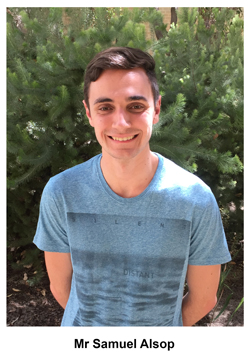
Mr Samuel Alsop
Samuel describes his project as follows,
“The project will involve investigating a biosynthetic gene cluster in the wheat pathogen Parastagononspora nodorum, using a variety of biochemical techniques. P. nodorum is the fungus responsible for Septoria nodorum blotch, and it is believed that it produces a number of secondary metabolites which contribute to its virulence.
As with other fungi, many of the biosynthetic gene clusters that produce these secondary metabolites are transcriptionally silent under normal growth conditions.
The aim of the project is to heterologously express genes in a biosynthetic gene cluster to produce intermediates and products of a biosynthetic pathway that has been shown to be expressed exclusively during infection of the host plant.
This will allow for the identification of the compounds using LC-MS and NMR spectroscopy. This will hopefully improve our understanding of the role that the secondary metabolite produced by this pathway may play in virulence, as well as providing insight into how it is synthesised by the fungus.
This project will be a continuation of work on this gene cluster conducted in a research project for BIO3003/BIO3005 throughout semester 2.”
![]() 14 Mar 2018
14 Mar 2018

Mr Stephen Delwig
Congratulations to the following two winners of the Rowe Scientific scholarship, covering the years 2017 and 2018, from the staff of Rowe Scientific Pty Ltd.
Mr Stephen Delwig
In Stephen’s own words;
“I completed both primary and secondary education in the Victorian western districts town of Camperdown. Neither of my parents were able to work during this time; my father is disabled and my mother cares for him.
After completing my final year of VCE, I acquired financial support in the form of a Dafydd Lewis Scholarship and moved to Ballarat to pursue my tertiary studies. I initially pursued a Bachelor of Mechanical Engineering at the University of Ballarat (which has since changed names to Federation University) but after two years, I decided that engineering was not my desired profession and changed courses to study a Bachelor of Science at Federation University.
I have now completed my Bachelor of Science degree (biochemistry major, microbiology minor). I have now moved to Geelong to pursue a chemistry Honours degree at Deakin University (Geelong Waurn Ponds campus).

Ms Catherine Fraser
In Catherine’s own words;
“I have recently completed a Bachelor of Science with Distinction from Deakin University. I will be undertaking an Honours year in 2018, and following this I intend on completing a PhD.
I have learnt a great deal about myself in my three years of undergraduate study. I have also developed professional skills that are applicable to any career path, and most significantly I found where my passion lay; chemistry.
Having a passion for my field has enabled my skill development. Naturally, my discipline specific skills have developed greatly, most notably, I believe, are the skills I have acquired and improved in teamwork, self-management, and critical thinking
Pursuing a career in chemistry has pushed and challenged me to take on any opportunity to learn.
![]() 30 Jan 2018
30 Jan 2018

The following are the two 2017 Rowe Scientific Metallurgy scholarship winners.
Mr Brendan Jones
In Brendan’s words;
My name is Brendan Jones and I am a current student at Curtin University studying a double degree in Chemical Engineering and Extractive Metallurgy.
At the end of 2017 I will have finished my third and final amazing year at Curtin’s West Australian School of Mines (WASM) in Kalgoorlie. Extractive metallurgy is a specialist field that deals with the extraction of metals and mineral products from their ores through the application of scientific principles.
Extractive metallurgists play a key role in the mining industry. Throughout the last three years at Curtin I have enjoyed every discipline which involved chemistry, and metallurgy is no different. Metallurgy incorporates all the best elements of practical chemistry from leaching to electrochemistry.
I enjoy the challenges that metallurgy provides, particularly when analysing or partially designing process flow systems and understanding the mechanisms involved.
Although learning about metallurgy is fascinating, I am very much looking forward to putting my theoretical knowledge into action with upcoming vacation work and potential employment in the mining industry in the future. I would like to extend my gratitude to Rowe Scientific for providing me with financial aid and allowing me to continue to enjoy the field of metallurgy.
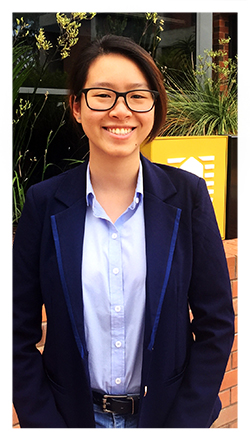 Ms Tram Nguyen
Ms Tram Nguyen
In Tram’s words;
I have always been interested in chemistry since I was in high school.
The fact that you can make different kind of alloys that can be applied to real life situations just by changing the composition of the metal input is really fascinating.
As a university student, I am always supported by Curtin. The Engineering and Science department tries their best to give me chances to get my hands on real life process through the laboratories.
One of the labs really got my interest was the extraction of gold from the ore. Even though we didn’t have the chance to deal with real gold due to high cost of gold, we actually had chance to extract metal out of the sample. In my point of view, it was a fantastic process.
Starting from a mixture between two things, by using the differences in their physical and chemical properties, we are able to separate them. That’s why I really like metallurgical field.
With the support of Rowe Scientific, through the Rowe Scientific Metallurgy Scholarship, I will be able to spend more time on my study. It also helps me prove that hard work will be rewarded. Thank you for your generosity and all your supports.
![]() 30 Jan 2018
30 Jan 2018

Mr Michael Van Wageningen
In Michael's own words;
I enjoy studying chemistry and plan to follow a career in that field.
I would love the opportunity to make wine in Europe and have already begun to make some connections through the University. I hope to one day start my own vineyard in Tasmania.
Being awarded this scholarship has made a big difference to my living conditions and helped to reduce stress about finances or placing additional burdens on my family.
You have changed my life in a way I never knew could happen. I am very grateful for your support and can't thank you enough.
![]() 30 Jan 2018
30 Jan 2018
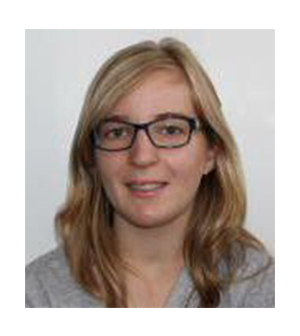
Ms Jessica De La Perrelle
In Jessica's own words;
I moved from the country to the University of Adelaide because of the high quality of teaching. From a young age I was passionate about 'saving the world' via sustainable technologies and still hope to work one day in research in the sustainable technology field.
I intend to graduate with honours in either physical chemistry or physics. Receiving this scholarship has had a significant positive impact and I would like to sincerely thank you for your generous support.
My intense study load means I have little time for a part time job, and rely on savings and family for financial support. The scholarship contributed to easing my anxiety and financial pressures, enabled me to purchase a new laptop, and allowed me to focus on my university studies.
This scholarship has helped me to realise a lifelong dream of researching improvements to sustainable technologies. In addition, I would like to thank you for making the scholarship available to rural, regional and remote students, as the transition to university is often so much more complex for them, and I would love to see more rural students succeeding at university.
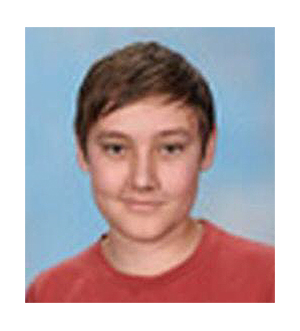 Mr Brandt Dolic
Mr Brandt Dolic
In Brandt's own words;
I have enjoyed my studies at the University of Adelaide and hope to one day complete a PhD and work in the research area.
My favourite thing at the University is The Braggs Laboratory and the investment and facilities they have put into the research area.
This scholarship has allowed me to focus more on studies rather than be distracted with juggling the financial issues that come with moving states.
Thank you for believing in the future I want to achieve. I really enjoy synthetic chemistry and wish to continue my studies further representing this scholarship.
Thank you very much for your support.
![]() 30 Jan 2018
30 Jan 2018

The awardees, are left to right, with their award category, and school year
Rowe Scientific was pleased to be able to donate some 60 cash prizes to category winners in the STANT Young Scientist competition. The awards took place in Darwin, on 23 November, 2017.
The following photograph includes students who were Rowe Scientific award winners from Our Lady of the Sacred Heart school (OLSH) in Alice Springs, who were not able to attend the award ceremony in Darwin.
Shawn Bett (1st Scientific Communication – Scientific Writing 7-9 individual, 1st STEM in the NT – Life Application 7-9 Individual, 2nd Scientific Communication – video 7-9 Group) Sarah Muller (2nd Scientific Communication – writing 7-9 Individual) Chiara Antonelli (1st Stem in the NT – Life Application 7-9 Individual) Matilda Kneiss (3rd Scientific Communication – Video 7-9 Group) Jacob Gardner (2nd Scientific Communication – Video 7-9 Group) Shaelyn Crowhurst (3rd Scientific Communication – Video 7-9 Group) Leticia Alcantara Keane (3rd Scientific Communication – Scientific Writing 10-12 Individual) Sarah Harris (3rd Scientific Communication – Video 7-9 Group) Jack van der Geest-Hester (3rd Scientific Communication – Scientific Writing 7-9 Individual) Nirali Panchal (2nd Scientific Communication – Poster 10-12) Joshua Mullan (1st Scientific Communication - Web based 10-12 – Individual)
Also pictured, far right, is Ms Jillian Neyland, NT nomination for BHP Billiton Foundation Teacher of the Year. Although not a recipient of a Rowe Scientific STANT prize, she teaches at OLSH in Alice Springs, and we offer our congratulations on her nomination.
Rowe Scientific Pty Ltd have pledged to support science teaching in each state and territory of Australia, through the Australian Science Teachers Association (ASTA), for an initial period of 5 years (commenced in 2016).
![]() 30 Jan 2018
30 Jan 2018
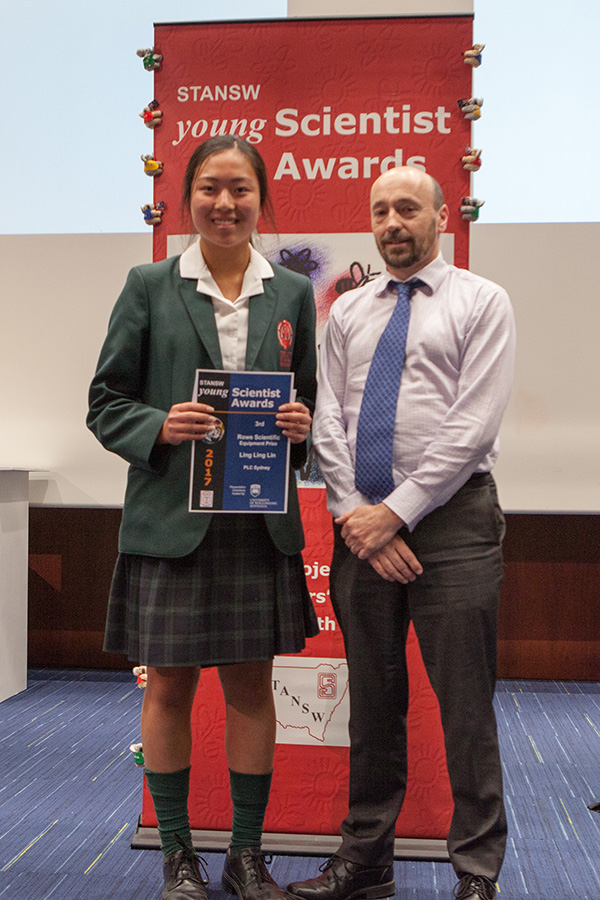
Ling Ling was presented with her award by Rowe Scientific NSW State Manager, John Dwyer.
Ms Ling Ling Pin from PLC Sydney came 3rd overall and was awarded the Rowe Scientific Equipment Prize.
She was concerned about the effects on phytoplankton when sunscreen washes from swimmers.
Using an electronic balance, she tested the effect of the same amount of common sunscreens on samples of water. After filtering and staining the samples and viewing under a microscope she found that the zinc sunscreen led to the smallest decrease in the phytoplankton population.
![]() 30 Jan 2018
30 Jan 2018
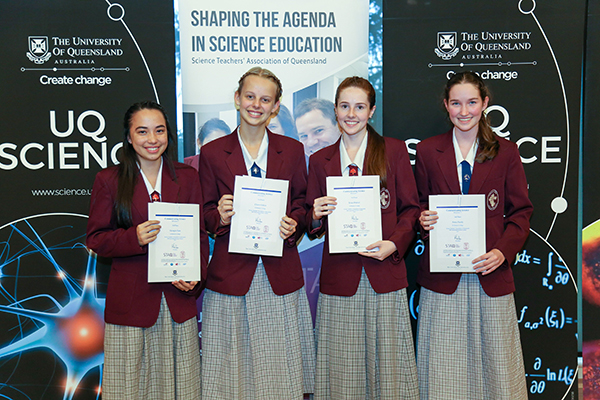
From left to right; Georgia Hannah, Claire Galvin, Eliza Dalziel and Anna Hardy
Rowe Scientific Rural / Regional Secondary Student Awards
On 28 October, 2017, the above students from St Monica's College, Cairns, were the recipients of a Rowe Scientific Pty Ltd Rural/ Regional Secondary Student Award, in the STAQ science competition, at the University of Queensland (UQ).
In their film Manure You Know, Eliza, Claire, Georgia and Anna explain the importance of dung beetles in our ecosystem. They investigate why the introduction of dung beetles has positively influenced farms on the Atherton Tablelands in Far North Queensland, and demonstrate how the belt transect method can be used to monitor dung beetle populations.
These 4 students also won the UQ Young Scientist Award as well as the Sleek Geeks Science Prize at the Eureka Awards. See the video here. Well done ladies.
![]() 30 Jan 2018
30 Jan 2018
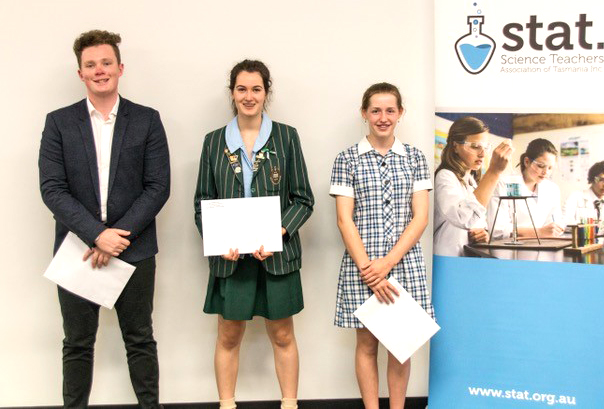
Research Investigations Senior Secondary Winner
Mr Logan Howell, Don College, Devonport
“NO?-Free (Low voltage, low current electro-reduction of aqueous nitrates via single cell electrolysis and subsequent observations of gas-particle phase equilibria”. Logan was also awarded the Rowe Scientific Most Promising Young Scientist Award (Senior Secondary).
Research Investigations Intermediate Winner
Ms Eloise Deconinck, St Mary’s College, Hobart
“Material World – a sustainable method to break down plastic waste”. Eloise was awarded the Rowe Scientific Most Promising Young Scientist Award (Intermediate).
Research Investigations Junior Secondary Winner
Ms Emma Spurr, Kingston High School
“Effects of Temperature & Light on Lettuce Seed Germination (part 2)”. Emma was awarded the Rowe Scientific Most Promising Young Scientist Award (Junior).
![]() 30 Jan 2018
30 Jan 2018

On 23 October, 2017, the following two students, chosen at random from many winners of Rowe scientific prizes, received their awards by the STAV’s Science Talent Search.
Mr Dylan Zipsin, of Viewbank College.
Dylan won his award in the Junior (Yr 7-8) Inventions section, by inventing a Smart Lock: The “ZipVault” was constructed using complex wood working knowledge as well as the advanced use of electronic components and wiring and the development of code using high levels of logical and mathematical thinking.
It was designed to give people peace of mind, knowing that their belongings were safe and out of anyone elses reach.
The box features two extra layers of security on top of the expected 6-digit pin, with already over ten million different possible combinations, requiring a magnet to turn it on, as well as for the owner to tilt the box four times, before you are confronted with the 6-digit pin.
Once you are finished, the box locks and shuts down, using no power whatsoever
Well done Dylan.
Ms Eleeza Maqsood, of Sirius College, Eastmeadows.
Eleeza won her award in the Junior (Yr 7-8) Experimental Research section, for the following project: “Does Aromatherapy essential oils vapour inhibit the growth of Escherichia Coli?”
Abstract: Stated on the internet, it has been said that essential oil aromas can help sanitize a room of bacteria. This experiment looked at the effect of the vapour of essential oils in the presence of Escherichia Coli (E. coli) bacteria. To verify this claim, essential oils were placed in plastic wells in the centre of nutrient agar plates streaked with E. coli bacteria. The plates were left in the incubator for three days and then were moved into the fridge, and the plates were analysed. The plates were examined in sections for bacterial growth, and bacterial coverage was totalled.
The results showed that the most effective oils in descending order were tea tree, eucalyptus, grapefruit, peppermint, and lavender. Only tea tree oil and grapefruit oil were significantly effective and consistent with background research claims.
Sounds like impressive work for a Junior Eleeza. Well done, from the Rowe Scientific staff.
![]() 30 Jan 2018
30 Jan 2018

Ms Georgia Free, Bachelor of Science (Advanced) - Key Program: Chemistry
In Georgia's own words;
“I am a hard-working and determined individual who wants to use chemistry to better healthcare and the environment. Over the past year, I have been doing undergraduate research with potential anticancer agents, under the supervision of Janice Aldrich-Wright; focusing on synthesis and characterisation of platinum metal-ligand complexes - some of which are more cytotoxic than cisplatin!
This summer, I have received a summer scholarship with CSIRO Energy in Newcastle, and will be developing catalysts to transform carbon dioxide into usable materials, to reduce air pollution.
Receiving recognition for hard work is always a great feeling, however it is simply icing on the cake, because using chemistry to solve big problems is reward enough. Next year, I aim to study a Masters of Philosophy at Western Sydney University and this scholarship has eased a significant amount of financial burden off of my shoulders for next year. I am extremely grateful for this prestigious scholarship - and I hope to make the donors proud with my research over the next few years.”
|
|
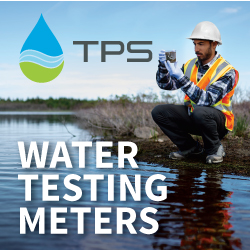
|
Please input;

© Rowe Scientific Pty Ltd | Terms & Conditions | Privacy Policy


